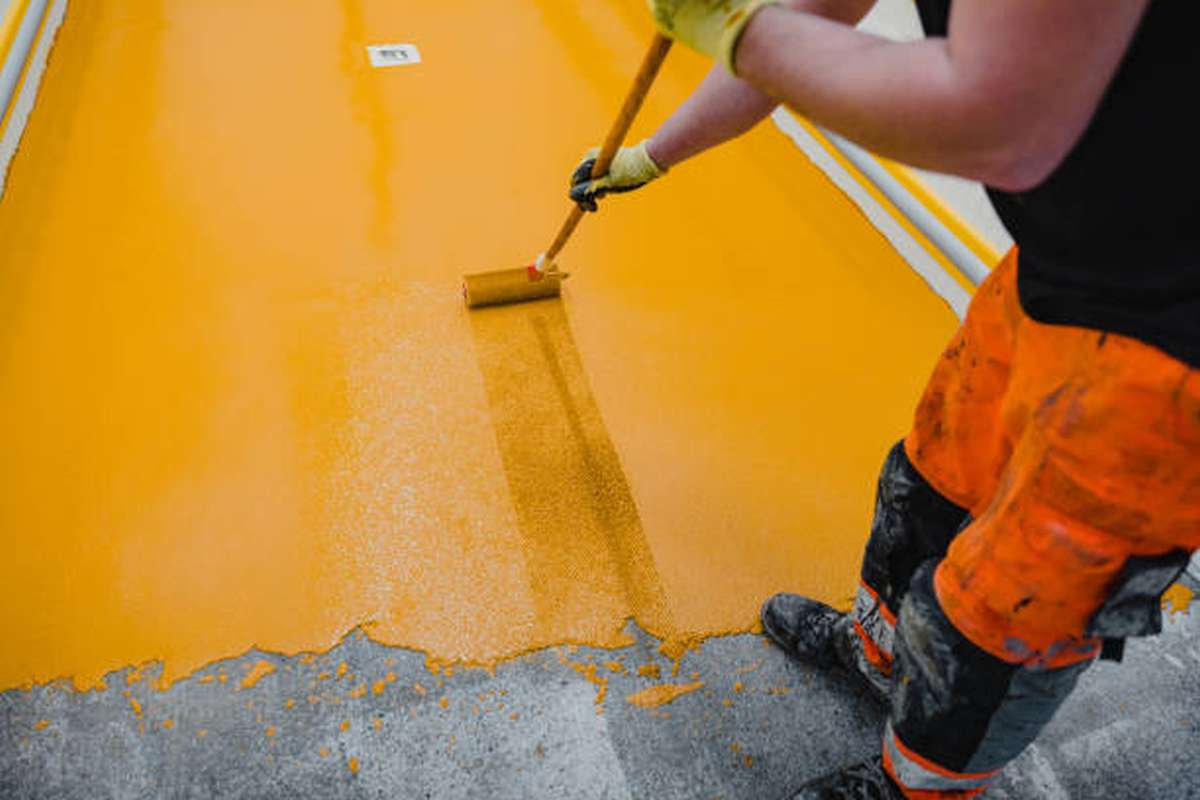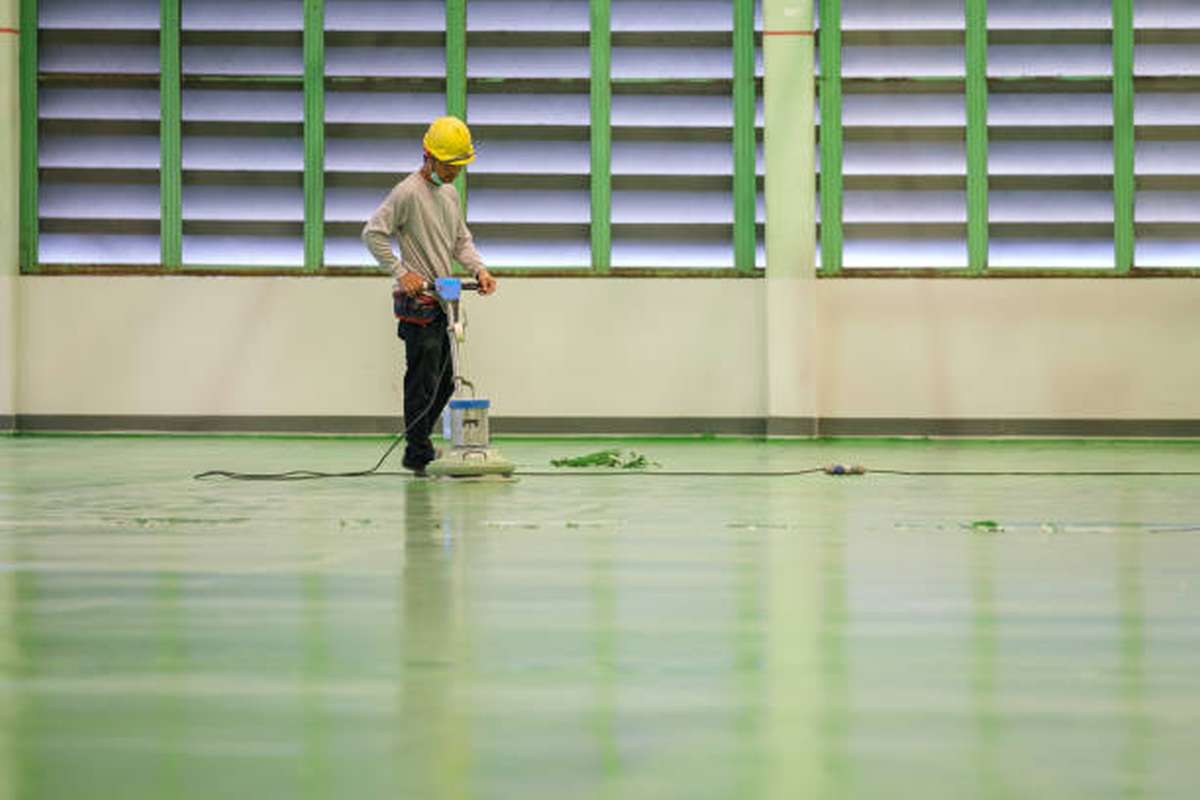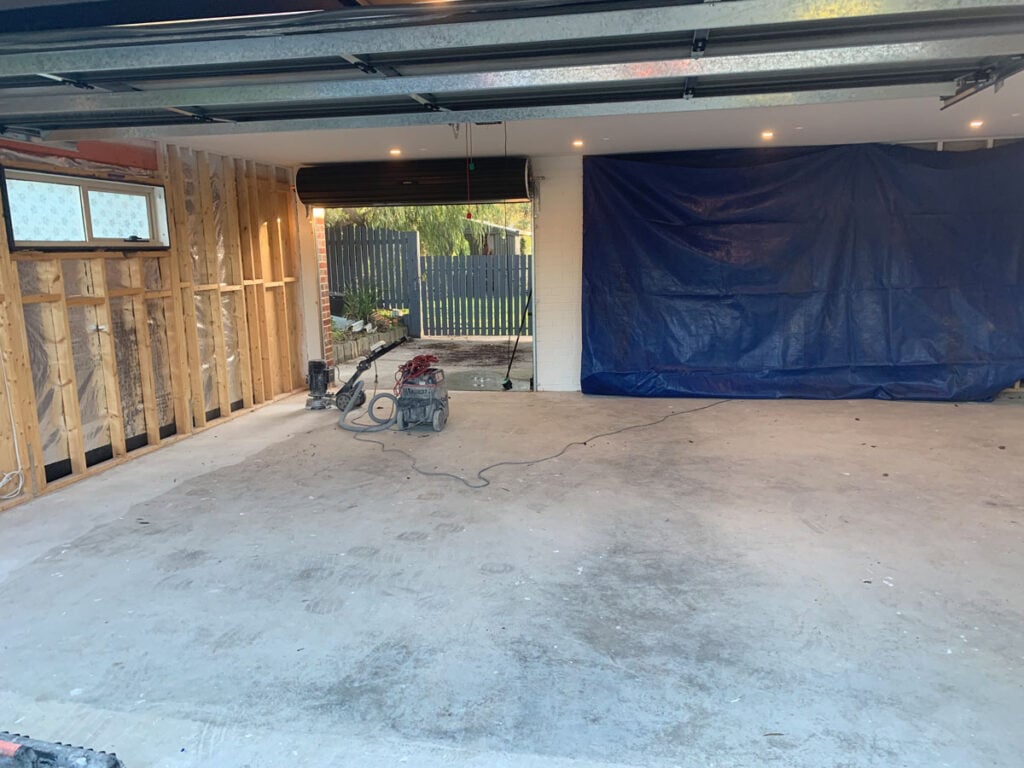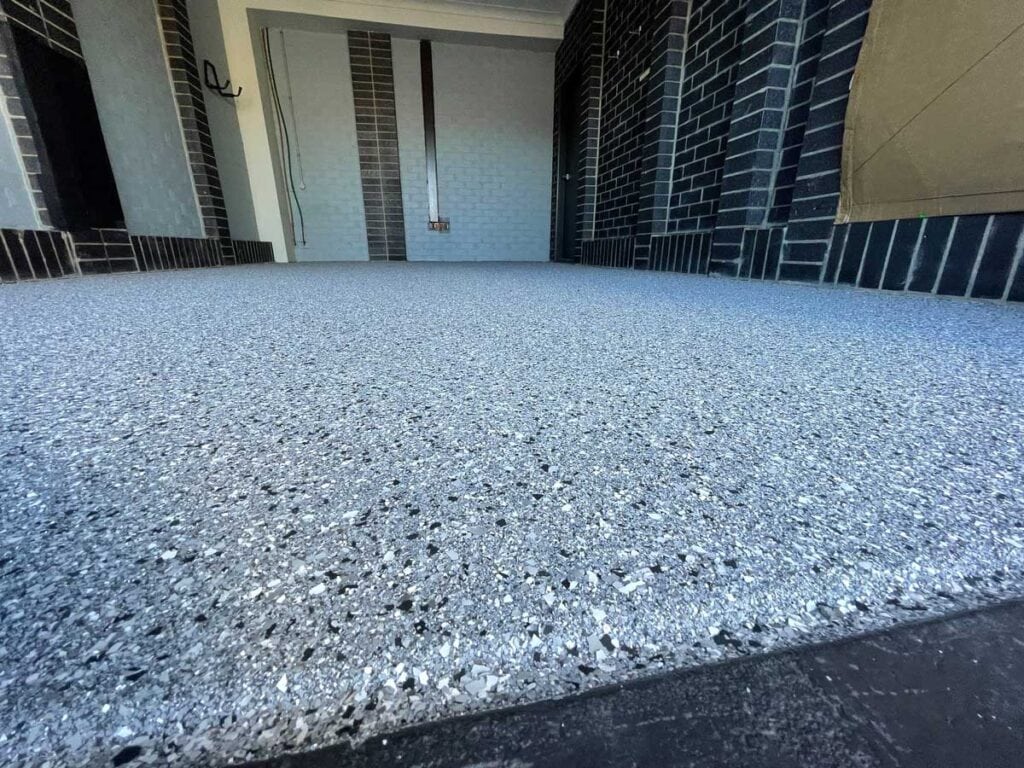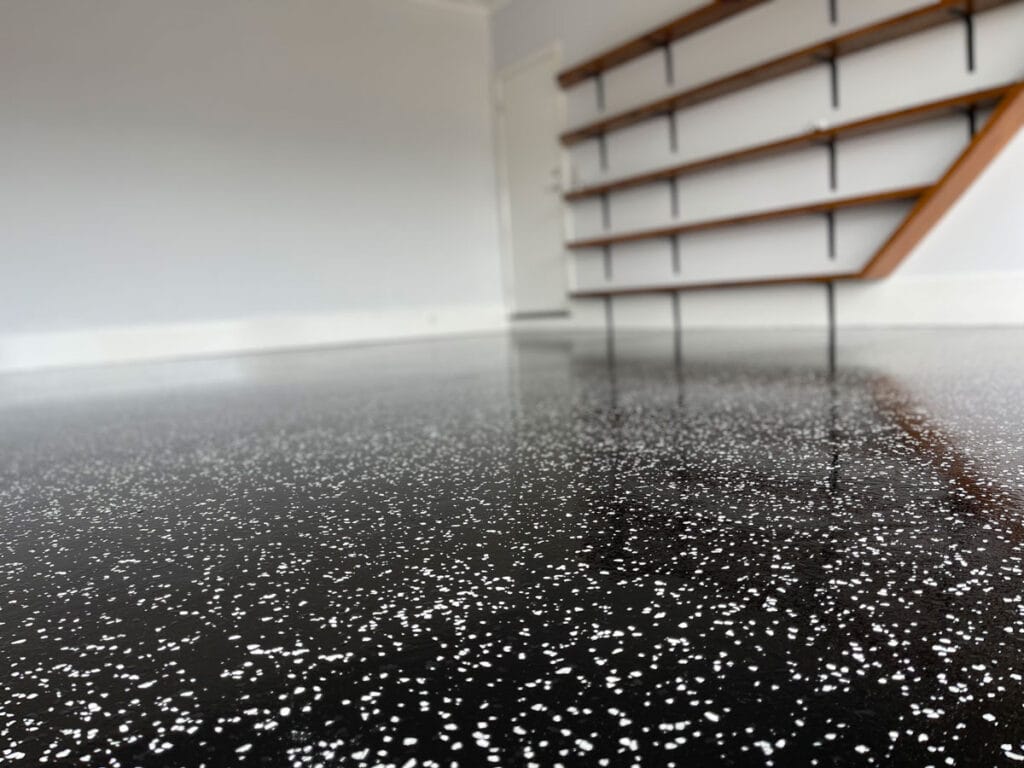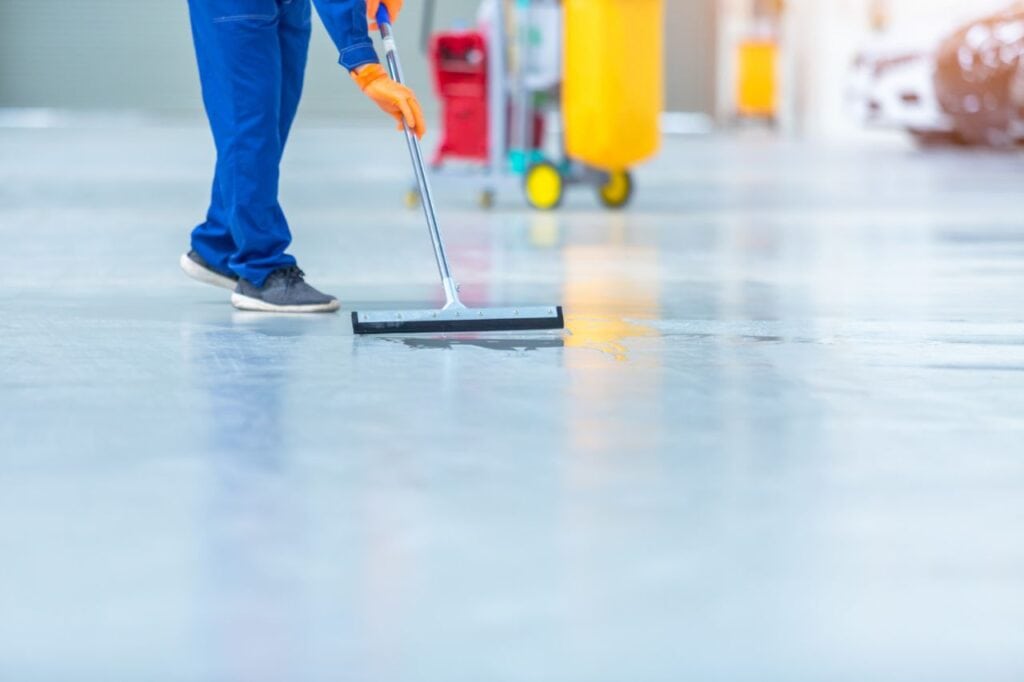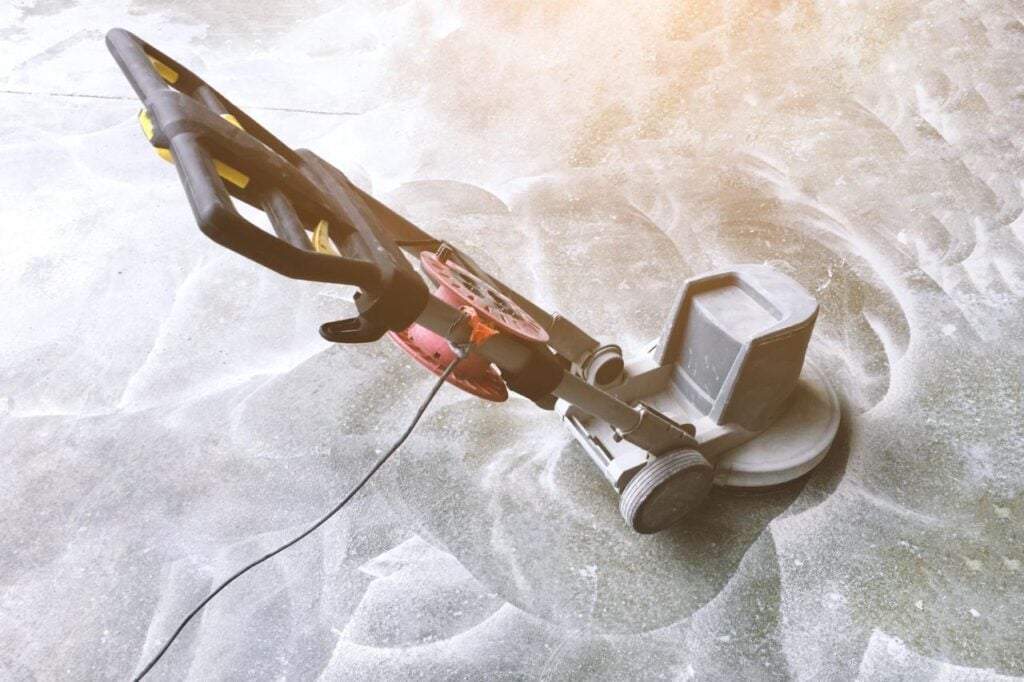Suppose you are searching for a suitable coating for your concrete floor, such as a garage floor. In that case, you may have encountered different options, including concrete paint and coating products like epoxy coatings, epoxy paints, or garage floor paints.
While some use the terms epoxy coatings and epoxy paints interchangeably, these two are distinct. Understanding the differences between them is crucial if you wish to enhance your floor, garage, or any other concrete surface with epoxy, as it will help you make an informed decision based on your desired aesthetic outcome.
One primary disparity between epoxy coatings and paints is their curing processes. Coatings undergo curing, whereas paints simply dry. Furthermore, when utilizing 100 per cent solid epoxy coatings, the surface becomes robust and long-lasting, displaying exceptional resistance to chemicals, abrasions, impact, oil and grease, and stains.
Now, you may wonder how epoxy coatings differ from other paint products, especially epoxy paint. Although both consist of a combination of resin and hardener used for renovating and safeguarding various surfaces, there are distinctions worth examining. Let's delve deeper into these dissimilarities.
Epoxy Paint vs. Coating
When undertaking home improvement projects, many consider epoxy coating and epoxy paint excellent choices for safeguarding surfaces against damage.
If your goal is to enhance your garage floor's performance, durability, and chemical resistance, epoxy coatings should be your preferred option. By selecting the appropriate epoxy coating system, you can reinforce your garage floor, increase its chemical resistance, and maintain its attractive appearance even after enduring years of heavy use.
To provide you with more insights, here are some key points to help you better understand epoxy coating and how it differs from epoxy paint.
Epoxy Coating is not Epoxy Paint.
It's important not to confuse epoxy coating with epoxy paint, as they have distinct characteristics. Epoxy paint is primarily liquid, while epoxy coating is a solid material blend. When the epoxy coating is applied, it creates a multi-layered surface that offers resistance against multiple impacts. Therefore, if you desire a more durable outcome, epoxy coating is preferable.
Epoxy coating is composed of two-part solid materials. The first part is resin, which is combined with a polyamine hardener. This combination of compounds results in a 100% solid epoxy, forming a robust and smooth surface. In contrast, epoxy paint is only half epoxy and behaves more like traditional paint that needs to dry once applied.
What Is an Epoxy Floor Coating?
To simplify, an epoxy coating consists of an epoxy resin and a polyamine hardener that must be mixed before application. Once mixed, there is limited time to apply the coating.
It is important not to mistake epoxy coating for paint. While epoxy coatings are poured or rolled onto the substrate, they differ significantly from paint. When epoxy coatings harden, they chemically bond with the floor, forming a thick, protective layer. This layer integrates with the base layer and creates a durable surface that resists scratches, oils, traffic wear, and hot-tire pickup. On the other hand, paint only provides a superficial layer of surface protection.
What Is Epoxy Paint?
Epoxy paint is a popular choice for garage floor coatings. It is primarily composed of acrylic latex, although some variations may contain a small amount of epoxy to enhance adhesion and durability. However, it is crucial to understand that epoxy paint is fundamentally different from an actual epoxy resin coating. Unlike a true epoxy coating, epoxy paint is prone to cracking and peeling, particularly in high-traffic areas.
Application and Durability: Paint vs Epoxy Floor Coatings
Paint
Ease of Application
There is a significant difference between paint and epoxy floor coverings in terms of application. It's usually more easier to paint a concrete floor. Common practise is using a power washer to remove dirt and grime from the concrete, then letting it dry. The next step is to apply the first of two paint coats. This method produces an aesthetically beautiful floor at a minimal price and with little effort. However, keep in mind that this is merely a stopgap measure with a finite shelf life.
Durability and Lifespan
Paint wears off after a few months or, best case scenario, a few years, especially in high-traffic areas. This results in the underlying concrete's exposure. There's also the risk of staining and peeling if the paint is covering up flaws in the concrete below.
Epoxy Floor Coatings
Exceptional Durability
Epoxy floor coatings, on the other hand, are extremely tough and can last for decades. Even in high-traffic locations, these coatings won't wear down easily. They are also resistant to most chemicals. Epoxy floor coatings also have the added benefit of not flaking because they are impervious to moisture. They can be made with slip-resistant qualities to increase safety in high-risk areas.
Application Process
Epoxy floor coatings are superior in durability than paint, but they need more work to apply. Surface preparation is essential, and may involve using tools like shot blasters, grinders, or scarifiers. The layers of an epoxy floor coating system are the primer, the body coat, the broadcast layer, and the top coat. Because of their multilayered construction, they are significantly thicker and more durable than paint.
The desired level of toughness and lifespan should guide the decision between paint and epoxy floor treatments. While paint is less expensive and easier to apply than other options, it is only a stopgap measure. Epoxy floor coatings, on the other hand, are extremely long-lasting and resilient. However, they call for deeper research and a more intricate application procedure.
Remember This When Scheduling Your Project!
- Epoxy coating is a polymer-based substance frequently applied as a protective layer for metal surfaces.
- Epoxy paint is a paint variety that incorporates epoxy resin as a prominent component in its composition.
- Epoxy coatings generally exhibit more excellent durability compared to epoxy paints.
- Epoxy coatings demonstrate superior resistance to high temperatures and chemicals than epoxy paints.
- Epoxy paints are usually more affordable than epoxy coatings.
- Applying epoxy coatings can be challenging, whereas epoxy paints are relatively straightforward.
Epoxy Paint vs. Normal Paint
Epoxy paint contains a mixture of epoxy and acrylic paint, making it thicker and enhancing its ability to bond and adhere to concrete surfaces. Compared to regular paint, epoxy paint is less prone to peeling, offering improved longevity on concrete slabs. The inclusion of epoxy in the paint mixture enhances its bonding capabilities.
Epoxy paint provides a cost-effective option for concrete floors in various industrial settings. It is more durable than standard paint due to the epoxy infusion, resulting in increased toughness, corrosion resistance, and ease of maintenance. It is a popular choice for a wide range of applications.
While epoxy paint offers durability, epoxy coating surpasses its performance. However, applying epoxy coating can be more challenging due to its utterly non-porous nature. Additionally, epoxy coating is typically more expensive than epoxy paint, as it is a pure epoxy product.
Epoxy Garage Flooring Is the Best
Garage floors serve multiple purposes that may take time to be apparent. Often, homeowners use their garages for storage, hiding their potential behind cluttered boxes and heavy equipment. If you have decided to transform your garage into a functional and easily maintainable workshop, opting for an epoxy coating for your floors is the ideal choice.
Conversely, epoxy paints are better suited for enhancing the appearance of your garage walls and cabinets. However, when it comes to revitalizing the look of your garage flooring, an epoxy coating should be your primary and ultimate solution.
High Epoxy Solids Percentage
The durability and performance of an epoxy coating are determined by the percentage of solids it contains. Epoxy paints commonly found in regular building supply stores usually have a low percentage of solids.
The higher the percentage of solids in an epoxy coating, the more epoxy the product retains during the curing process. For example, in a 100 per cent solids epoxy, the entire product remains on the floor after application and drying.
Having a higher percentage of solids means that the final layer of epoxy coating will be thicker, providing enhanced protection for your flooring. The increased thickness contributes to improved durability and performance.
Paint Doesn't Polish Residential Floors Like Epoxy
The noticeable difference between epoxy coating and epoxy paint becomes apparent in the results they deliver.
Typically, epoxy flooring made with epoxy paint tends to wear and deteriorate within a few years. On the other hand, the epoxy coating offers a much longer lifespan, lasting up to 10 years. This durability makes epoxy coating an excellent choice, especially for residential areas.
While homeowners often favour epoxy paint due to its lower cost, the epoxy coating provides the opportunity to create special effects that enhance the overall flooring system.
Additionally, the epoxy coating application process is generally faster than epoxy paint, which requires ample time to fully dry. Using epoxy paint can slow down the progress of the project and may lead to accidental smudges or damage while waiting for it to dry. In contrast, epoxy coating minimizes the need for rework, saving time and resources.
Types of Floor Coating Systems
Depending on specific requirements and purposes, industrial facility flooring materials can be categorized into different types. These categories include:
Acrylic (MMA)
Methyl methacrylate (MMA) is a polymer with a dual-system application in commercial flooring. It's a commercially viable alternative that's both less complicated and more long-lasting than epoxy.
The low-glare satin finish of MMA flooring is aesthetically pleasing. It is scratch- and solvent-proof, and it can withstand mild acids and alkalis. But remember that MMA is highly combustible and smells awful. This necessitates the use of particular installation and ventilation methods to guarantee user safety.
Polyurea
Synthesised by reacting an isocyanate with a resin blend, polyurea is an organic polymer. A novel substance with a rubbery feel is the result of this reaction. Although polyurea lacks the brittleness of epoxy, it has a solid reputation for lasting a long time.
Polyurea flooring is available in a high-gloss finish, making it an aesthetically pleasing option. The high stain and chemical resistance of this material makes it ideal for industrial settings. Polyurea flooring's great heat resistance makes it useful in kitchens and other high-temperature environments. Its durability makes it suitable for use in a wide range of commercial and industrial environments.
Epoxy
Epoxy is a resin that consists of a combination of epoxide resin and polyamine hardener mixed in equal parts. During the application process, the epoxy undergoes a curing period of at least 24 hours. Once fully cured, it forms polymer structures that contribute to its exceptional strength and durability.
Epoxy floor coatings are non-porous, making them ideal for use in facilities that require maximum durability and impact resistance. These coatings resist chemical spills and abrasions, ensuring long-lasting protection. They are often applied with decorative chips or coloured sands, allowing for endless possibilities in terms of colour schemes and patterns. Epoxy coatings offer versatility in design while maintaining their robust characteristics.
Epoxy & Urethane
In the food and beverage industry, epoxy and urethane floor systems are frequently utilized due to their specific properties and benefits. These flooring systems are designed to provide a seamless surface resistant to moisture and heat, ensuring optimal hygiene and safety in food processing and preparation areas.
Both epoxy and urethane floors feature an additional top layer of urethane, which acts as a sealant. This top layer enhances the durability and longevity of the flooring, protecting it from wear and tear caused by heavy foot traffic, equipment, and cleaning agents. The seamless nature of these flooring systems also prevents the accumulation of dirt, bacteria, and other contaminants, facilitating easier cleaning and maintenance.
Moreover, epoxy and urethane floors' moisture and heat resistance make them well-suited for the food and beverage industry, where spills, water, and temperature fluctuations are typical. These flooring systems provide a reliable and hygienic surface that meets the stringent requirements of food safety regulations.
Conclusion
There is a significant difference between the curing times required for epoxy coatings and epoxy paints. Paints just dry, but coatings go through a curing process. 100% solid epoxy coatings transform the surface into one that is durable and long-lasting, with remarkable resistance to chemicals, abrasions, impact, oil and grease, and stains. It's crucial to remember that epoxy coating is not the same thing as epoxy paint if you want to know what sets the two apart. Both epoxy coating and epoxy paint are two-component solids, but epoxy paint is just half epoxy, hence they serve different purposes.
Epoxy paint is simply half epoxy and has to dry after application, while epoxy coatings are made up of epoxy resin and a polyamine hardener that must be combined before application. Epoxy paint, especially in heavily used areas, is prone to cracking and peeling. Paint is more convenient to use than epoxy floor coverings, but it won't last as long and won't be as durable. Although epoxy floor coatings are long-lasting and durable, they are more labor-intensive to apply. An epoxy floor coating system consists of a primer, body coat, broadcast layer, and top coat, and surface preparation is required.
The choice between paint and epoxy floor treatments should be based on the desired level of durability and lifespan. It is usual practise to coat metal objects with an epoxy coating, which is a polymer-based compound. Epoxy infusion makes it more durable than regular paint and makes it a cost-effective choice for concrete floors in a variety of industrial environments. Epoxy paint lasts longer on concrete floors without chipping or peeling. Epoxy coating allows for the addition of visually striking designs to a floor.
Acrylic (MMA), polyurea, epoxy, and urethane are all examples of floor coating systems. Epoxy and urethane floor systems are frequently used in the food and beverage industry because of their unique features and advantages. These flooring systems provide a smooth, heat- and moisture-proof surface, making them ideal for kitchens and other food-related facilities where safety and cleanliness are paramount.
Content Summary
- Understanding the differences between epoxy coatings and paints is crucial for choosing the right coating for your concrete floor.
- Epoxy coatings undergo curing, while paints simply dry.
- 100% solid epoxy coatings provide exceptional resistance to chemicals, abrasions, impact, oil and grease, and stains.
- Epoxy coatings create a robust and long-lasting surface, while epoxy paint behaves more like traditional paint.
- Epoxy coatings consist of resin and a polyamine hardener, forming a solid and smooth surface.
- Epoxy coatings chemically bond with the floor, offering superior protection compared to paint.
- Paint only provides a superficial layer of surface protection.
- Epoxy paint is primarily composed of acrylic latex and contains a small amount of epoxy.
- Epoxy paint is prone to cracking and peeling, especially in high-traffic areas.
- Paint is easier to apply than epoxy floor coatings.
- Paint is a stopgap measure with a limited lifespan, while epoxy floor coatings can last for decades.
- Epoxy floor coatings are resistant to wear, chemicals, and hot-tire pickup.
- Epoxy floor coatings require surface preparation and a multilayered application process.
- The decision between paint and epoxy floor coatings depends on desired toughness and lifespan.
- Epoxy coatings offer superior durability and performance compared to epoxy paints.
- Epoxy garage flooring is recommended for transforming a garage into a functional workshop.
- The durability of epoxy coatings depends on the percentage of solids they contain.
- Epoxy coatings exhibit more excellent durability and resistance to high temperatures and chemicals than epoxy paints.
- Epoxy paints are usually more affordable than epoxy coatings.
- Epoxy coatings require a more challenging application process than epoxy paints.
- Epoxy coating provides better results and a longer lifespan than epoxy paint for residential areas.
- Epoxy coating application is generally faster than epoxy paint, minimising the need for rework.
- Different types of floor coating systems include acrylic (MMA), polyurea, epoxy, and epoxy & urethane.
- MMA flooring is aesthetically pleasing, scratch-proof, and solvent-proof but requires special installation and ventilation methods.
- Polyurea flooring offers high stain and chemical resistance, heat resistance, and durability.
- Epoxy floor coatings are non-porous, resistant to chemical spills and abrasions, and offer versatility in design.
- Epoxy & urethane floor systems are ideal for the food and beverage industry, providing a seamless and hygienic surface.
- Epoxy and urethane floors have an additional top layer of urethane for enhanced durability and protection.
- Epoxy and urethane floors are moisture and heat-resistant, meeting food safety regulations.
- Epoxy and urethane floors prevent the accumulation of dirt, bacteria, and contaminants, facilitating easier cleaning and maintenance.
Frequently Asked Questions
Rub the existing surface with Acetone solvent or Colormaker CRS on a clean rag. If the paint softens and becomes sticky, it cannot be painted over with epoxy but can probably be coated with Chlorinated Rubber. You may use epoxy if the solvent removes some surface oxides and does not soften the paint.
The main difference between acrylic vs. epoxy floor coating is the formula. Acrylic is a water-based floor coating made of acrylic polymer emulsions. Meanwhile, the epoxy coating comprises a resin and polyamine hardener, making epoxy better.
Both epoxy and urethane paint typically dry very hard and offer a high degree of water, chemical, abrasion and impact resistance. Epoxy paint tends to be thicker (higher build) and better fills cracks and surface imperfections.
While epoxy coatings do not crack in extreme heat or cold, concrete does. Epoxy coatings cannot withstand the stresses associated with concrete cracks due to settling, dry shrinkage or other factors.
Whether solvent- or water-based, epoxy paint usually requires mixing two components—resin and hardener—prior to painting. Mix thoroughly, using an electric drill chucked with a stirring bit. Once the epoxy is ready, you can finally begin to paint the floor, much like you'd paint other surfaces.

